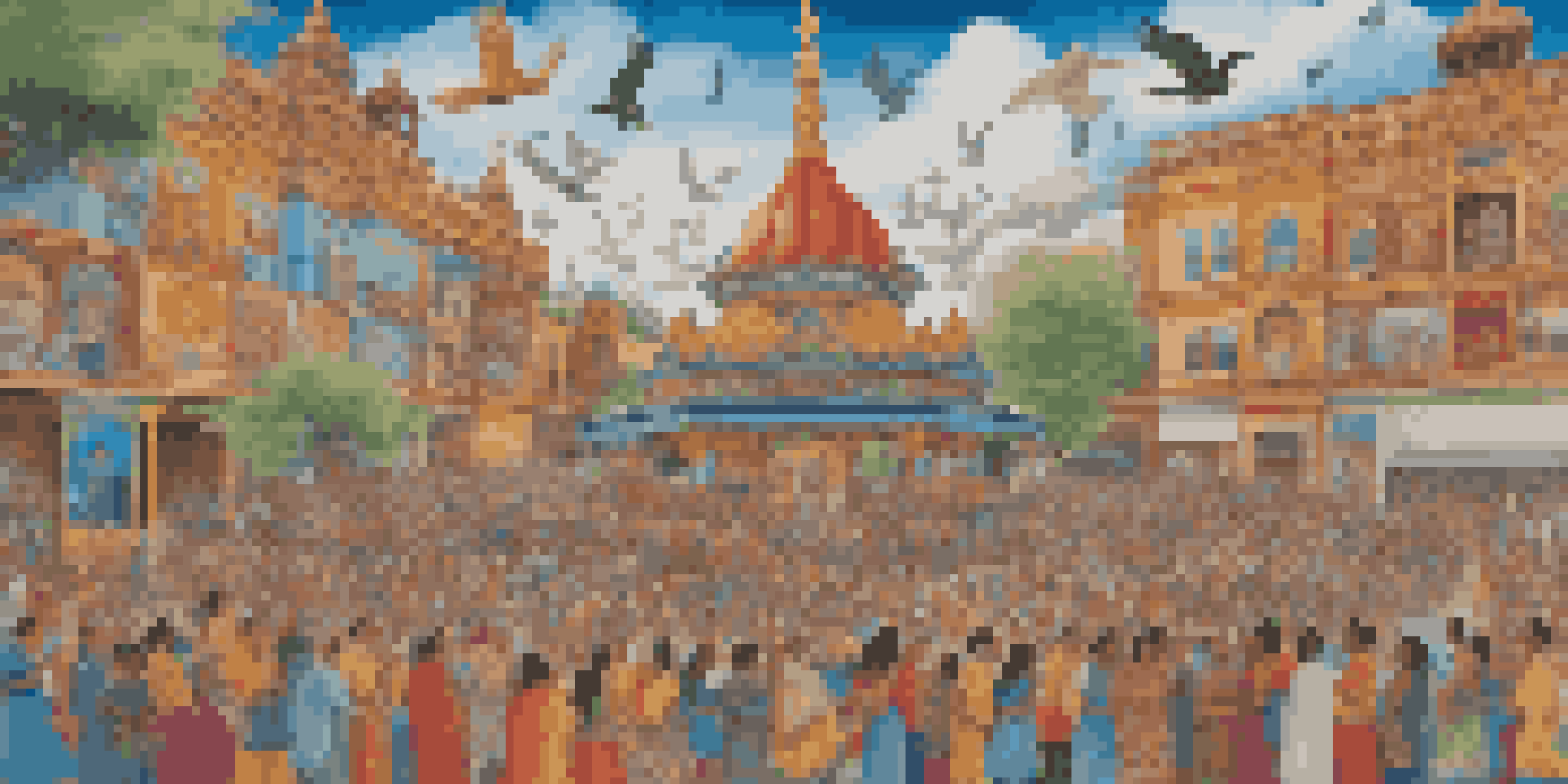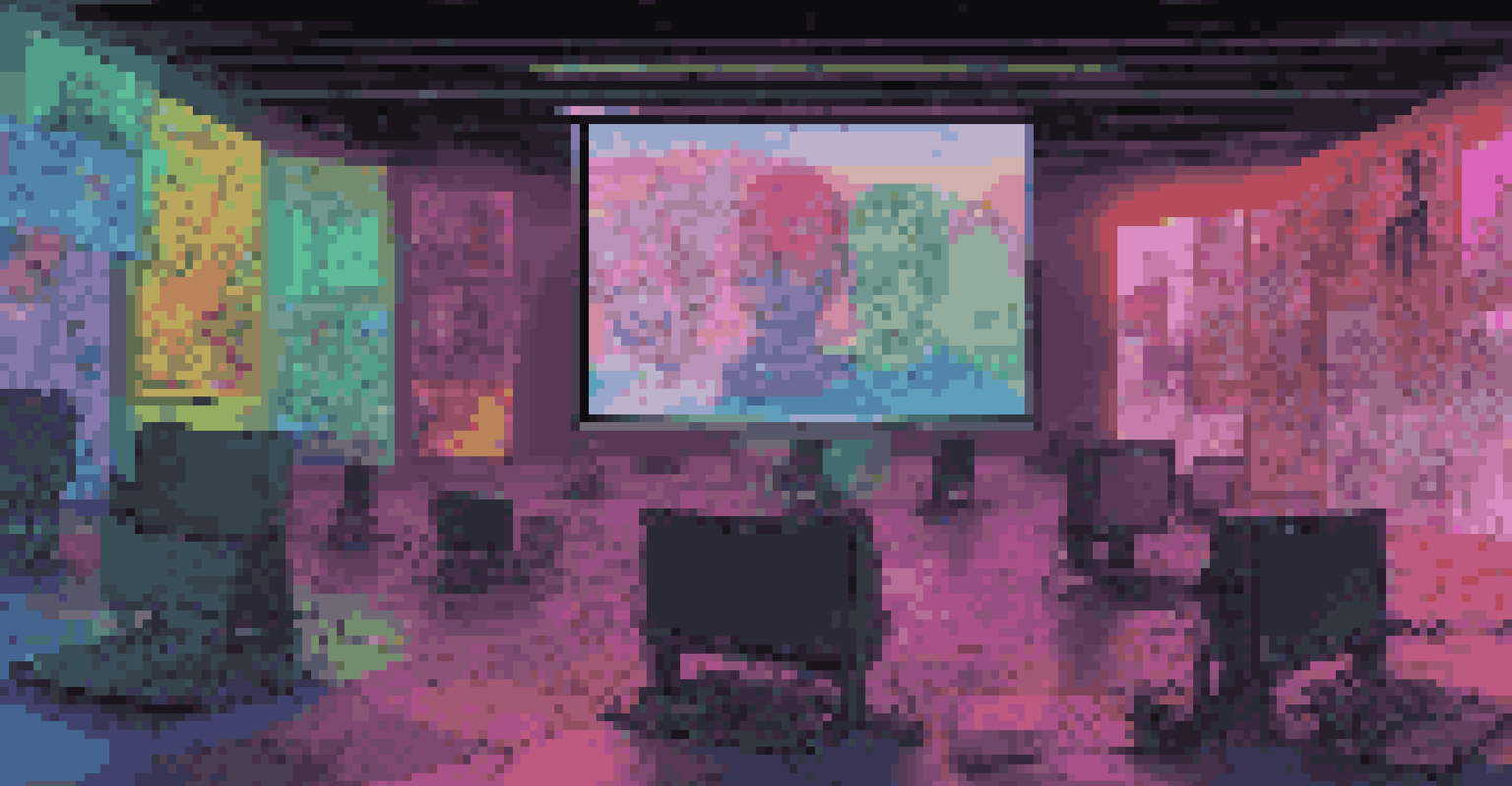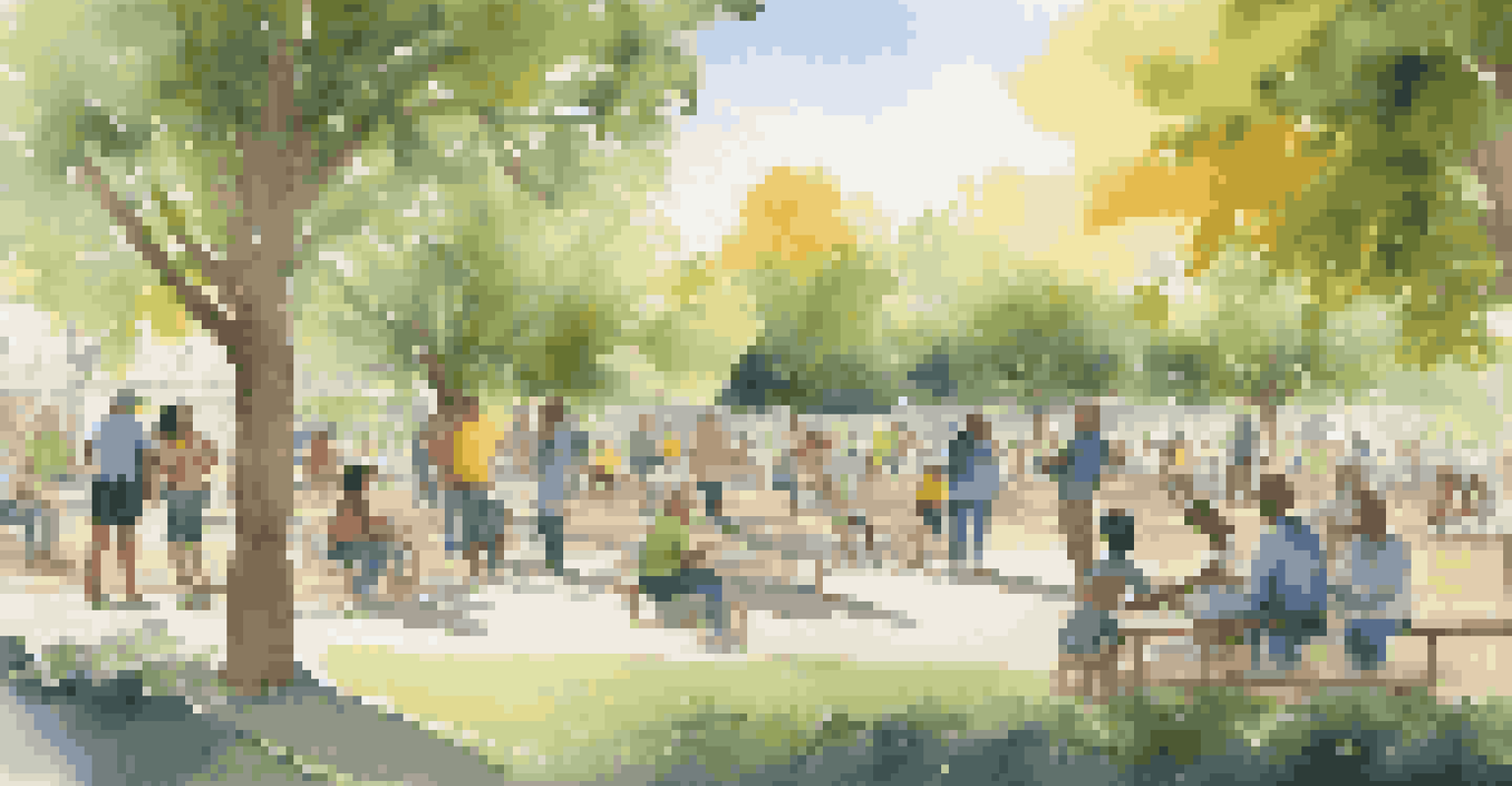The Role of Art in Shaping National Identity and Politics

Art as a Reflection of Cultural Identity
Art has always been a mirror reflecting the culture and values of a nation. From paintings to music, artists encapsulate the essence of their society, often highlighting what makes them unique. This cultural representation helps forge a collective identity among citizens, creating a sense of belonging and pride.
Art is the most beautiful of all lies.
For instance, traditional folk art can evoke memories and stories that resonate with people, reminding them of their heritage. Such art forms often become symbols of national identity, celebrated during festivals and national events. When people see their culture represented in art, it strengthens their connection to their roots.
Moreover, this cultural reflection can spark discussions about national identity, leading to greater awareness and appreciation of diversity within a country. As art engages the public in these dialogues, it becomes a powerful tool for fostering unity and understanding among different communities.
Art as a Catalyst for Political Change
Throughout history, art has played a pivotal role in challenging political norms and advocating for change. Artists often use their work to comment on social issues, mobilizing public opinion against injustices. This can be seen in various forms, from protest songs to powerful political cartoons that critique government policies.

For example, the mural movement in Mexico post-revolution showcased the struggles of the people and their fight for equality. These vibrant murals not only beautified public spaces but also served as a rallying cry for social reform. Such artistic expressions can inspire collective action and motivate citizens to participate in the political process.
Art Reflects Cultural Identity
Art serves as a mirror of societal values, helping to forge a collective identity and pride among citizens.
Furthermore, art can create a platform for marginalized voices, giving them the opportunity to express their experiences and aspirations. By amplifying these narratives, art can drive political discourse, leading to reforms that reflect the needs and desires of the populace.
The Role of National Symbols in Art
National symbols, such as flags and anthems, often find their way into art, reinforcing a sense of national pride. Artists incorporate these symbols into their work to evoke emotions related to patriotism and belonging. This connection can instill a sense of duty among citizens to engage with their nation's political landscape.
Every artist dips his brush in his own soul, and paints his own nature into his pictures.
Take, for instance, the use of the American flag in contemporary art. Artists have reinterpreted this symbol in various ways, prompting conversations about freedom, identity, and the complexities of patriotism. Such works can challenge viewers to reflect on what their national identity means in a diverse society.
Moreover, these symbols can unite people across different backgrounds, fostering a collective identity that transcends individual differences. As citizens resonate with these shared symbols, they may feel more inclined to participate in national conversations, strengthening democracy.
Art Movements and Political Ideologies
Art movements often align with specific political ideologies, shaping national discourse and identity. For instance, the Dada movement emerged as a reaction to the horrors of World War I, promoting anti-war sentiments and questioning established norms. Such movements can galvanize public sentiment, leading to significant political and social shifts.
Similarly, the Harlem Renaissance celebrated African American culture while critiquing racial discrimination. This artistic movement not only reclaimed cultural identity but also inspired civil rights activism. By framing political struggles through art, these movements can mobilize communities around shared goals and aspirations.
Art Drives Political Change
Throughout history, art has challenged political norms and mobilized public opinion against injustices.
In essence, art movements serve as a reflection of societal values and challenges, encouraging citizens to confront political realities. As people engage with these artistic expressions, they become more informed and active participants in shaping their nation's future.
The Influence of Digital Art on Political Engagement
In today's digital age, art has taken on new forms that influence political engagement. Social media platforms enable artists to share their work widely, reaching audiences that traditional mediums might miss. This democratization of art allows for diverse voices to contribute to national conversations, fostering broader political awareness.
Consider the impact of viral art pieces that comment on current events; they can spark dialogue and mobilize action in unprecedented ways. For instance, digital illustrations and memes can quickly convey complex political messages, making them accessible to a wider audience. This immediacy can galvanize public opinion and encourage civic participation.
Moreover, digital art can serve as a tool for activism, allowing artists to collaborate and amplify their messages. By harnessing technology, artists can create movements that resonate on a global scale, proving that art remains a vital catalyst for change in the political arena.
Art as a Tool for Healing and Unity
In times of crisis, art can serve as a powerful tool for healing and fostering unity. Creative expressions often provide solace and comfort to individuals grappling with trauma, be it from war, political unrest, or social upheaval. Art has the unique ability to transcend language barriers, bringing people together through shared experiences and emotions.
For example, community art projects can transform spaces and create safe havens for dialogue and understanding. These projects not only beautify neighborhoods but also promote collaboration among diverse groups, encouraging healing and reconciliation. When communities come together to create, they forge stronger bonds that can withstand political challenges.
Digital Art Enhances Engagement
In the digital age, art reaches wider audiences, fostering diverse voices and encouraging civic participation.
Furthermore, art can commemorate collective struggles, reminding people of their resilience and shared history. By honoring these narratives, art fosters a sense of pride and hope, inspiring individuals to contribute positively to their country's political landscape.
The Future of Art in National Identity and Politics
As society evolves, so too will the role of art in shaping national identity and politics. The rise of new technologies and platforms will continue to transform artistic expression, making it more inclusive and impactful. Artists will increasingly navigate a complex landscape where they can voice their perspectives on pressing social issues, influencing public opinion.
Moreover, the intersection of art and activism will become more pronounced, with artists taking on roles as advocates for change. This evolution will likely lead to innovative collaborations between artists and political leaders, fostering initiatives that prioritize cultural engagement in policymaking. The potential for art to drive social change remains vast and uncharted.

Ultimately, the future of art in national identity and politics promises to be dynamic and multifaceted. As artists push boundaries and challenge conventions, they will continue to inspire dialogue and reflection, shaping the narrative of what it means to belong to a nation.